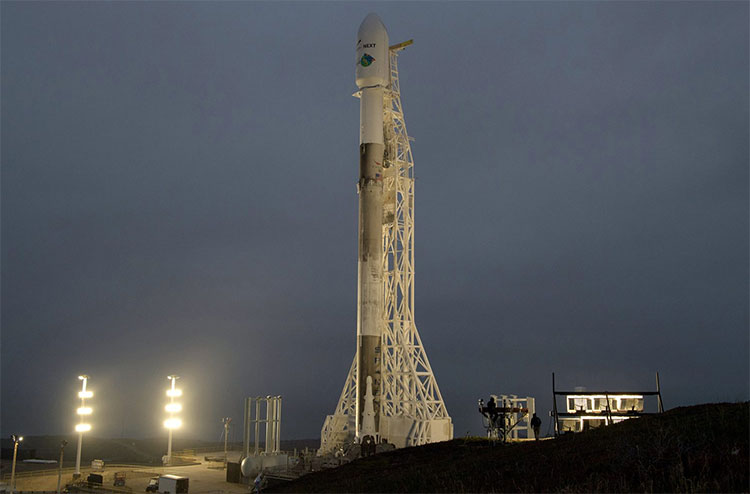SpaceX's boosters fell into the sea during a supply flight to ISS
SpaceX Technology Corporation successfully launched space shuttle Dragon, carrying necessities and research equipment, provided to the scientists, but failed to bring ground-boosters. safe.
SpaceX's announcement said the Falcon 9 rocket had left the launch pad on December 5 (local time), dawn on December 6 (Vietnam time) at the launch site 40, Cape Canaveral Air Base, Florida, The United States, carrying a transport ship Dragon with 2.5 tons of cargo.

SpaceX's Falcon 9 rocket carries satellites ready to leave the launch pad in California, USA on May 22.(Photo: EFE-EPA / VNA).
This is the 16th mission of shipping in a long-term contract between SpaceX and the US Aerospace Agency (NASA). 10 minutes after the launch, Dragon spacecraft reached orbit, the first goal in this journey and it is expected that it will take Dragon another two days to go to ISS.
However, the first floor of Falcon 9 was unable to land vertically, allowing the missile to be reused in SpaceX's subsequent launches. The cruise video was mounted on the rocket that showed that after separating from the second floor and launching the engine back to Earth, Falcon 9's first floor spun and fell into the Atlantic Ocean just 8 minutes after leaving the launch pad.
SpaceX CEO Elon Musk said the hydraulic pump system operates unstable, making it impossible to land as expected and fall into the sea. However, he said it seemed that the parts were not damaged and the search groups were mobilized to recover parts of Falcon 9.
This is the first time that it failed to ensure that the missile landed safely after a series of 12 successful landings. SpaceX is working hard to achieve this goal in order to reduce costs by reusing parts of missiles.
- 'Jet people' fell into the sea
- Chinese rocket launchers fall to the ground exploding
- SpaceX is ambitious to reuse spacecraft launch missiles
- Japan develops new boosters
- Chinese missiles exploded and fell near a village inhabited by people after the launch
- The supply ship for ISS departed this morning in Vietnam time
- Video: SpaceX's failed ground-boosters
- Indonesia found more and more and a plane body fell into the sea
- Term 2: Unbelievable stories
- Japan launches spacecraft to deliver supplies to the ISS Station
- Proton-M space boosters fall right after launch
- Russian missiles fell into the sea immediately after leaving the platform
 Van Allen's belt and evidence that the Apollo 11 mission to the Moon was myth
Van Allen's belt and evidence that the Apollo 11 mission to the Moon was myth The levels of civilization in the universe (Kardashev scale)
The levels of civilization in the universe (Kardashev scale) Today Mars, the sun and the Earth are aligned
Today Mars, the sun and the Earth are aligned The Amazon owner announced a secret plan to build a space base for thousands of people
The Amazon owner announced a secret plan to build a space base for thousands of people